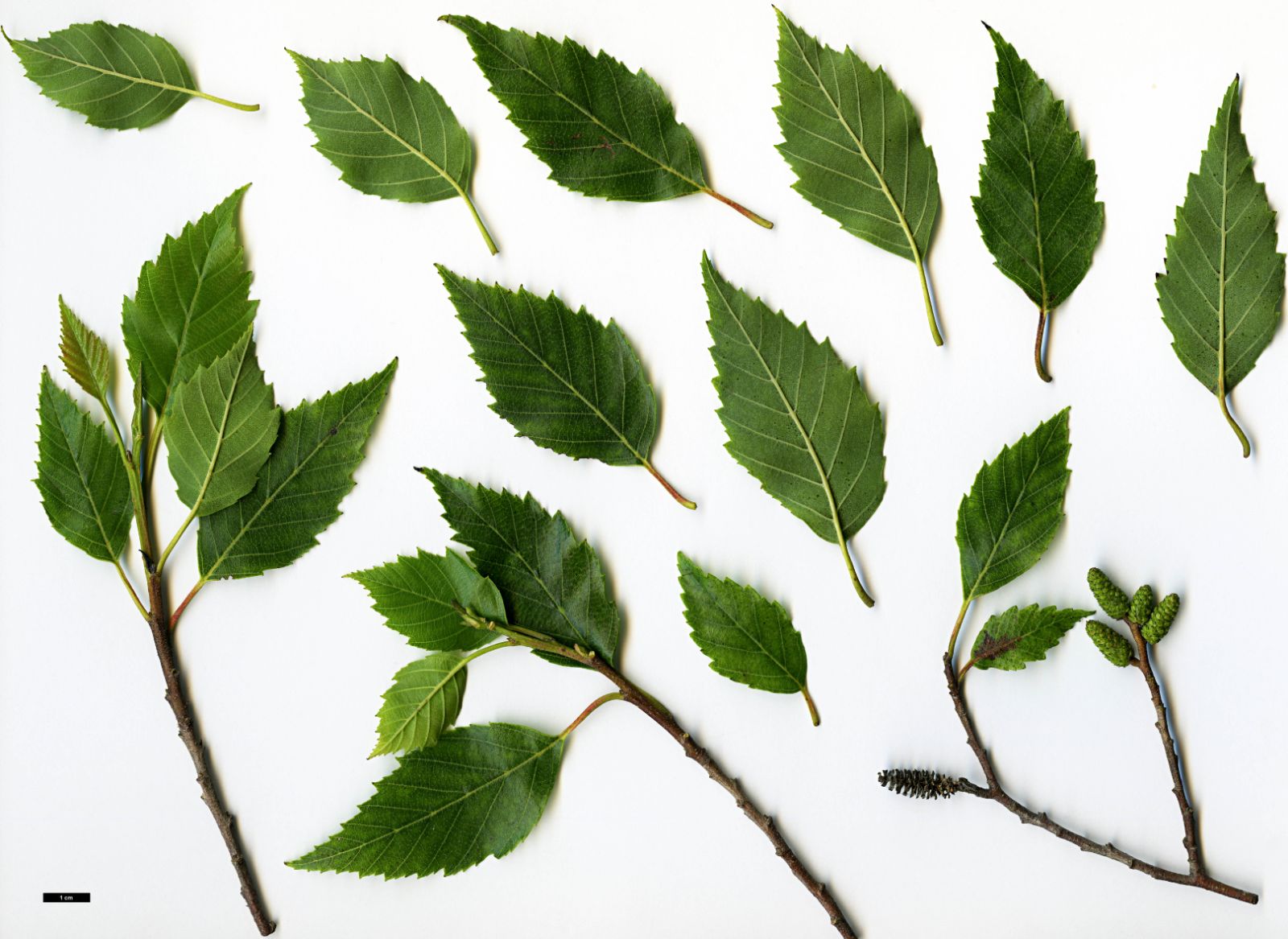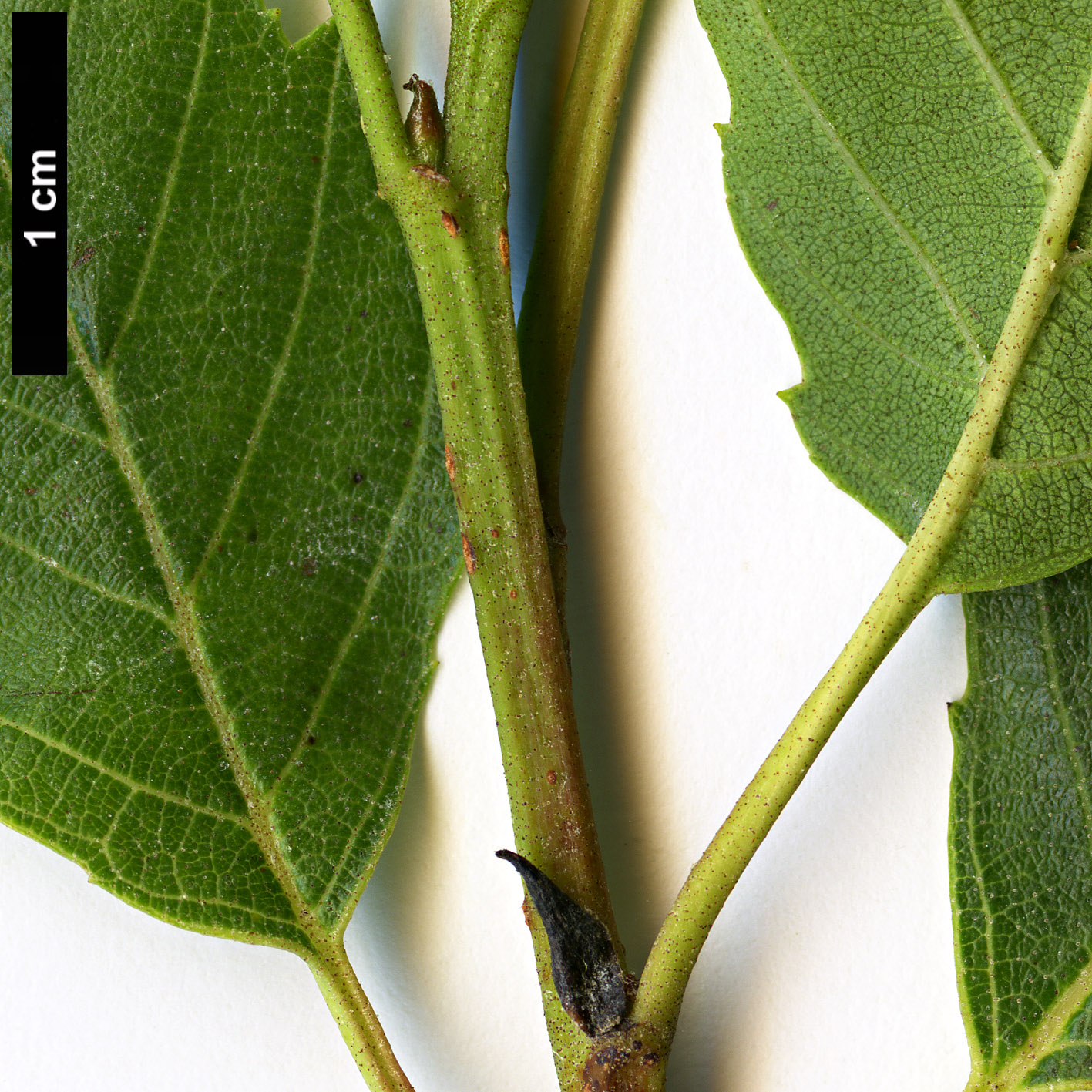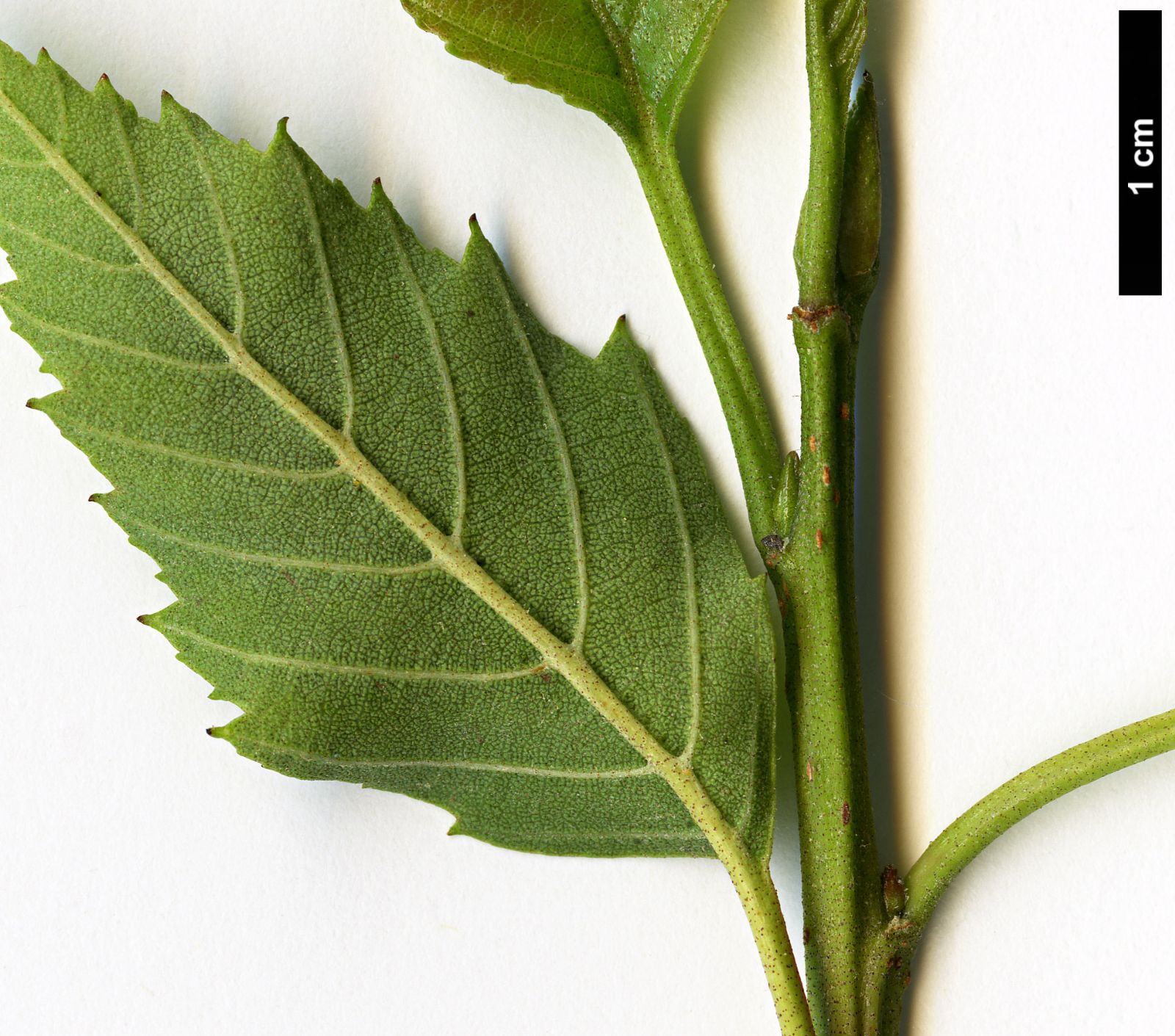Alnus jorullensis
Sponsor
Kindly sponsored by
a member of the International Dendrology Society
Credits
Tim Baxter & Hugh A. McAllister (2024)
Recommended citation
Baxter, T. & McAllister, H.A. (2024), 'Alnus jorullensis' from the website Trees and Shrubs Online (treesandshrubsonline.
Other taxa in genus
- Alnus acuminata
- Alnus alnobetula
- Alnus betulifolia
- Alnus cordata
- Alnus cremastogyne
- Alnus djavanshirii
- Alnus dolichocarpa
- Alnus × elliptica
- Alnus × fallacina
- Alnus fauriei
- Alnus ferdinandi-coburgii
- Alnus firma
- Alnus formosana
- Alnus glutinosa
- Alnus hirsuta
- Alnus incana
- Alnus inokumae
- Alnus japonica
- Alnus lanata
- Alnus lusitanica
- Alnus maritima
- Alnus matsumurae
- Alnus × mayrii
- Alnus nepalensis
- Alnus nitida
- Alnus oblongifolia
- Alnus orientalis
- Alnus pendula
- Alnus rhombifolia
- Alnus rohlenae
- Alnus rubra
- Alnus serrulata
- Alnus serrulatoides
- Alnus sieboldiana
- Alnus 'Sipkes'
- Alnus × spaethii
- Alnus subcordata
- Alnus trabeculosa
Spreading single-stemmed trees to 20 m tall. Bark grey to dark brown, often with deep bands encircling the stem and prominent lenticels. Twigs softly hairy with large yellowish glands especially at nodes. Buds with two scales, heavily resin-coated. Leaves variable, typically elliptic-oblong, or obovate (rarely ovate), always broadest towards apex; apex acute to obtuse; base acute or cuneate; 5–16 × 3–7 cm, dark green and dull to shining above, green to yellow-brown and dull below; coriaceous; variously lobed from double-serrate, sinuate to shallow-lobed (often distinctly lobed on long-shoot); glabrous to yellow-pubescent above and below, especially in vein axils; glandular; secondary veins 5–10 pairs. Petioles 6–12 mm, mostly glabrous and glandular. Stipules ovate to elliptic, 5 × 1.5 mm, yellowish hairy. Staminate and pistillate catkins produced during the previous growing season, terminal racemose clusters of 3–5 subtended by leaves. Pistillate inflorescences 2.5 × 2 mm. Staminate catkins pendent, 3.5–11 cm × 3–9 mm. Fruit ovoid to ellipsoid, 1.3–2.5 × 0.9–1.5 cm; scales 3.5–5 mm. Seed narrowly winged, dark brown, elliptic to obovate, 1.7–3.5 × 1.2–3 mm. (Furlow 1979)
Distribution Guatemala Mexico
Habitat Common at high elevations along the mountains of south-western Mexico. A colonising species encountered in a range of habitats including typically humid woodlands, stream edges and swamps to areas of open mixed oak-pine woodlands.
USDA Hardiness Zone 7-10
Conservation status Least concern (LC)
Alnus taxa in Central and South America are justifiably confusing. The characters traditionally used to separate them are marginal, leading to common misidentification; their morphology is hugely variable, and appears to be related (not necessarily clearly) with habitat. All alders of the Americans are diploid (2n=28) (Furlow 1979; Restrepo & Gervais 1994; McAllister, pers. obs.). Being wind-pollinated and sharing similar phenology, they are highly likely to interbreed where both occur together; molecular evidence further supports these species being closely related, if not synonymous (e.g. Ren, Xiang & Chen 2010). It is believed that the central and southern American species evolved from A. rubra and migrated south (Furlow 1979).
Two broad species are tentatively accepted here, Alnus jorullensis and A. acuminata. The main morphological characters used to separate the species are leaf shape and secondary leaf vein number. The leaf of A. jorullensis is broader towards the apex (cf. broadest at base in A. acuminata) and has 5–10 pairs of leaf veins (cf. 10–15 in A. acuminata).
Alnus jorullensis is a common tree at higher altitudes in southwestern Mexico, and in drier habitats than A. acuminata. South American records of A. jorullensis can be referred to A. acuminata. A. jorullensis is an early successional species which colonizes disturbed open ground. It has many economic uses including for reforestation, fuel wood, and in silvo-pastoral systems to improve soil fertility (IUCN 2020). It is not commonly cultivated beyond its native range, except in warm temperate to subtropical climates including in parts of Australia and in New Zealand, where it is admired for its graceful habit and more or less evergreen leaves (Easy Big Trees 2024; Mountain View Nursery 2024).
In cooler temperate climates it is rare in cultivation, but surprisingly hardy; in such environments it tends to form a large, semi-evergreen tree with a weeping and graceful habit. Trees have been introduced to cultivation into Britain in recent years, probaby first to Kew in 1980. Many are misidentified as A. acuminata in cultivation but leaf shape and vein number should reliably differentiate the two. Seeds were collected by James Russell in Veracruz state in 1983. One seedling, planted at Castle Howard in North Yorkshire in spring 1985 when c. 1.3 m tall, grew fast but was killed by icy winds the following February. According to Russell it is a handsome species, resembling at a distance an evergreen oak.



